The Limits Of How Far Humanity Can Go In The Universe

If we look to the distant future, with unlimited technology, how far could we reach?
“Even if I stumble on to the absolute truth of any aspect of the universe, I will not realise my luck and instead will spend my life trying to find flaws in this understanding — such is the role of a scientist.” –Brian Schmidt
If you peer out into the depths of space — at the vast expanse of stars, galaxies, and even the leftover glow from the Big Bang itself — you might think that if humanity can understand the laws of nature and create a good enough technology, there are no limits to what we can explore. If we were to develop nuclear fusion technology, antimatter storage capabilities, or even the ability to harness dark matter as we traveled, we could unlock the potential for interplanetary, interstellar or even intergalactic travel. By accelerating ourselves over months or even years to reach near-light speeds, we could even reach our target destination within a single human lifetime.
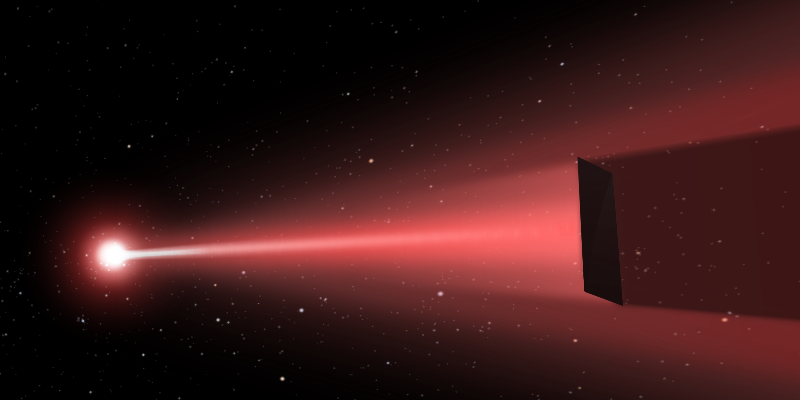
Yet even if we imagine a future where we can do exactly that, there are still parts of the Universe that will be forever inaccessible to us. If the Universe were static, constant and forever unchanging, then all it would take was time to reach even the most distant object we could fathom. But our Universe isn’t any of those things; it’s expanding, cooling, and gravitating from an initially hot, dense state known as the Big Bang.
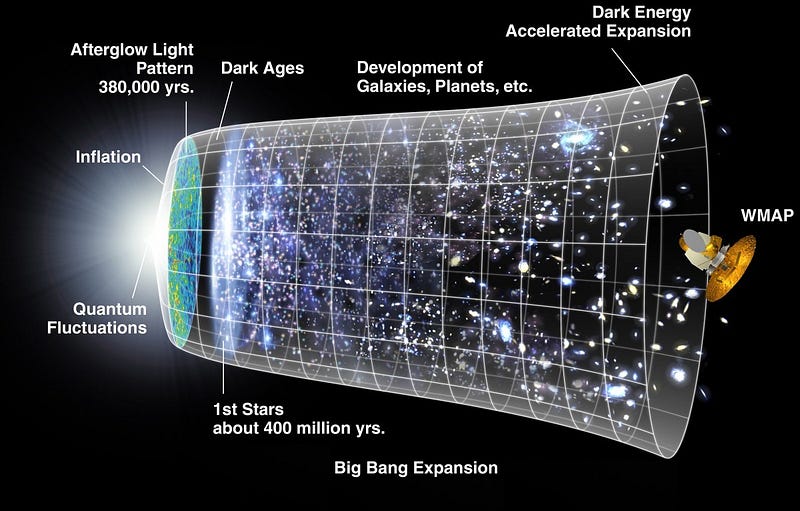
Where we are today, we can still see it all:
- hundreds of billions of galaxies,
- each one full of billions (or more) stars,
- extending for billions of light years in all directions,
- with the leftover glow from the hot Big Bang still visible beyond them.
That glow was once so hot, it ionized atoms, split nuclei apart and even spontaneously created matter and antimatter. Thanks to the expanding Universe, it’s cooled down into the microwave portion of the electromagnetic spectrum today, at a temperature less than 3 K above absolute zero. Since the Big Bang, that radiation has moved at the speed of light — a speed faster than any form of matter could ever move — but the energy has dropped as the expanding Universe stretches its wavelength.
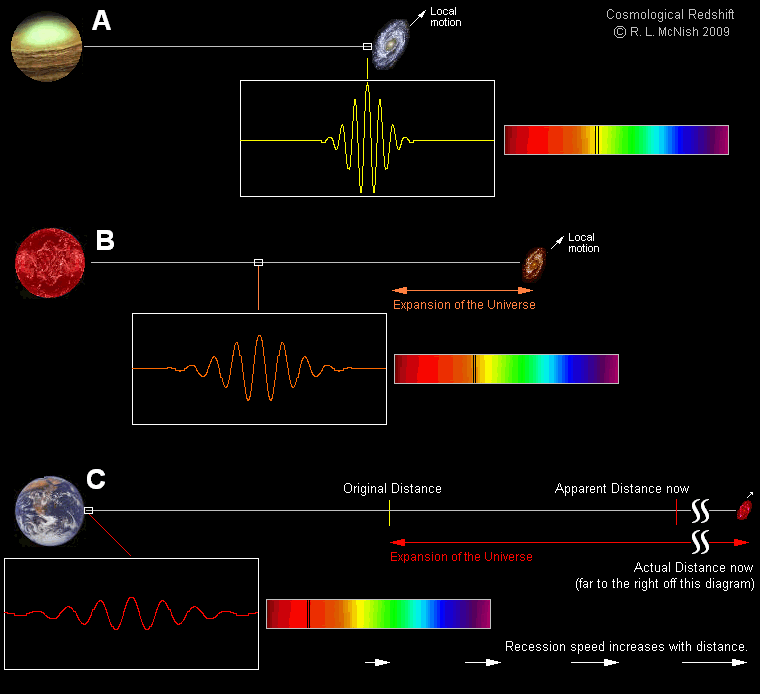
Gravitation works to slow that expansion down, and for a time, the most distant galaxies did slow down in their motion away from us. As time went on and on, the light from these distant objects caught up to us, and we became able to see more and more of them.
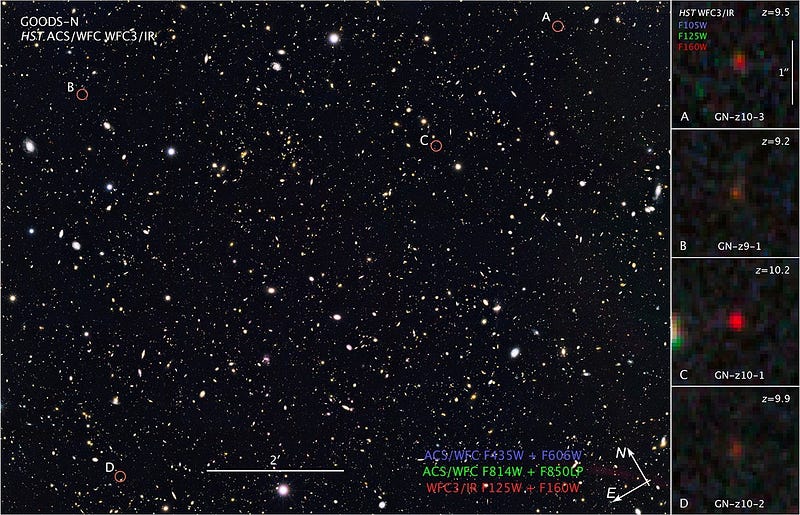
But about 6 billion years ago, the Universe expanded to such a large volume and the density of “stuff” like matter and radiation dropped to such a small value that a new form of energy became important: dark energy, or the energy inherent to empty space itself. When that form of energy took over, it caused the Universe’s expansion to accelerate, and distant galaxies began to move away from one another at a faster and faster rate.
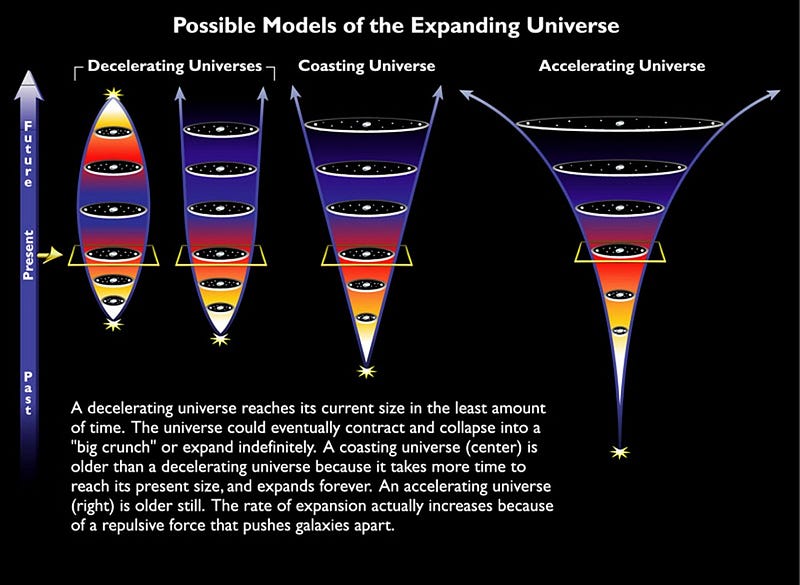
This didn’t undo the powerful influence of gravitation to bring atoms, planets, stars, galaxies or even groups and clusters of galaxies together. Our local group — featuring the Milky Way, Andromeda, Triangulum and about 50 other, smaller galaxies — was bound together long before dark energy became important, and dark energy can do nothing to tear these already bound structures apart. As time goes on, all the galaxies in our local group will merge together, creating a behemoth of a giant elliptical galaxy, known as Milkdromeda. In about 4 billion years, the Milky Way-Andromeda merger will occur, creating the most spectacular night sky Earth will ever know.
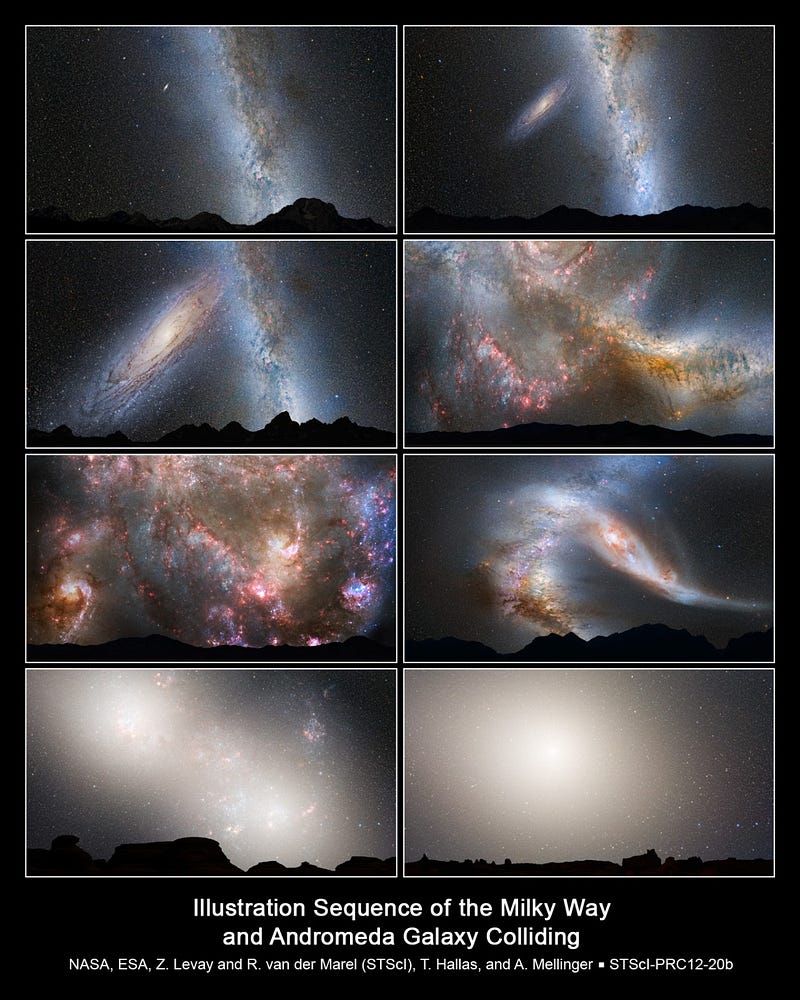
But beyond our local group, all the other galaxies, groups and clusters will accelerate away from one another. After enough time goes by, even the nearest galaxies beyond our local group will have sped away from us so far and for so long that they’ll be invisible to us in any wavelength of light, even with the most powerful telescopes we’d ever be able to build. The leftover glow from the Big Bang itself would fade into obscurity, and all we’d be left with were the stars within our own galaxy. Those will burn for trillions and trillions of years, and we’ll have new ones created for quadrillions of years on top of that. To someone born in the far distant future, the Universe’s memory of where it came from — of the Big Bang, of other galaxies, and of the process that brought all of this into existence — will be wiped clean from what’s even observable. Even if we were to leave today for the most distant stars and galaxies we can imagine at nearly the speed of light, only 3% of the ones in the observable Universe could be reached, a number that gets smaller and smaller with each moment that passes.

I wrote a script of this for the Kurzgesagt — In a Nutshell YouTube channel, and the video below is a culmination of the efforts of an outstanding creative team to make the cosmic story of humanity’s limits accessible to everyone.
In another hundred billion years or so, just a few times the present age of the Universe, Milkdromeda will be the only thing left, and any creatures alive at that point will never reach anything beyond their own local group, wherever it may lie. Appreciate the view we have today; it’s the greatest one any living creature will ever have of our Universe, exactly as it is.
This post first appeared at Forbes, and is brought to you ad-free by our Patreon supporters. Comment on our forum, & buy our first book: Beyond The Galaxy!





